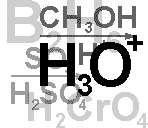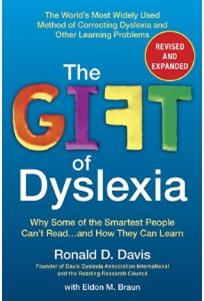The Big Picture
Disorientation!
Recently, Dyslexia has been further categorized into many different labels including ADD, ADHD, visual-spatial learners, processing disorders, etc. As more is learned about the commonality in thinking styles among all of these, there is a consistent theme with respect to many learning disabilities: Disorientation.
Disorientation is actually a natural talent – a gift. When disoriented, dyslexics can problem-solve, create, invent, engineer, and escape by using their extraordinary and vibrant multi-sensory thoughts, similar to movies. This same gift, however, is also what makes dealing with 2-dimensional words and symbols a tedious task.
Disorientation
Video courtesy of fellow Davis® Dyslexia Facilitator, Karen LoGiudice of New England Dyslexia Solutions in MA. Used with permission.
When equipped with the right tools, people with dyslexia can intentionally control and correct their perceptions and avoid the disabling aspects, allowing their gifts and talents to shine.
Because many written words and symbols are abstract, and cannot be deciphered by their natural picture-thinking style, dyslexics become confused. When confused, their automatic response is to disorient and examine the source of the confusion multi-dimensionally. This works beautifully with real-world objects, but it doesn’t work for the written word. The result of disorientation while reading is distorted perception of the words – causing frustration, mistakes, loss of comprehension, and fatigue.
With his discovery of turning off disorientation, Ron Davis went on to develop The Reading Research Council in California with the help of Dr. Fatima Ali, Ph.D. Together, they worked with hundreds of Dyslexic volunteers – explaining how they, too, could recognize and turn off their own disorientation. Consistently, they all experienced corrected perception by following his instructions.
When word of mouth spread about the Davis methods, and Ron found himself in a position where he could no longer keep up with the demand, he published The Gift of Dyslexia and established Davis Dyslexia Association International where facilitators are now trained.
The Gift of Dyslexia
Fish Don't Climb Trees
Available on Amazon.
The Gifts of Visual Thinking both Cause and Correct Reading Difficulties.
How does disorientation affect reading, spelling, comprehension?
It can cause a dyslexic to perceive words on a page strung together, with no spaces, making it nearly impossible to decipher words within it.

It can cause a dyslexic to perceive that the symbols and letters are “hovering” or even sliding off of the page.

Disorientation can also cause words to appear or disappear (addition or omission of words in the text).
It can cause transpositions of words, like: was/saw, on/no, from/form; as well as transpositions with individual letters within words, like: b/d/p/q, f/t, u/n.
The severity of the symptoms varies with each individual and the symptoms of disorientation vary from day-to-day and minute-to-minute, depending upon the situation.


